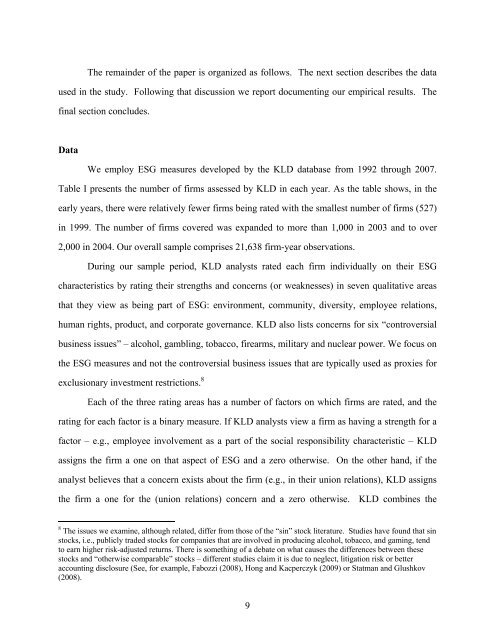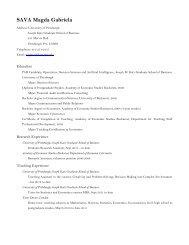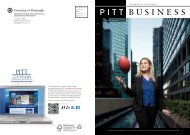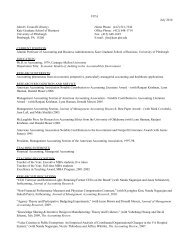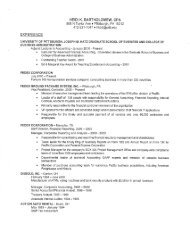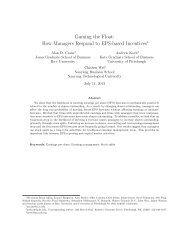Stuart L. Gillan, Jay C. Hartzell, Andrew Koch, and ... - Pitt Business
Stuart L. Gillan, Jay C. Hartzell, Andrew Koch, and ... - Pitt Business
Stuart L. Gillan, Jay C. Hartzell, Andrew Koch, and ... - Pitt Business
You also want an ePaper? Increase the reach of your titles
YUMPU automatically turns print PDFs into web optimized ePapers that Google loves.
The remainder of the paper is organized as follows. The next section describes the data<br />
used in the study. Following that discussion we report documenting our empirical results. The<br />
final section concludes.<br />
Data<br />
We employ ESG measures developed by the KLD database from 1992 through 2007.<br />
Table I presents the number of firms assessed by KLD in each year. As the table shows, in the<br />
early years, there were relatively fewer firms being rated with the smallest number of firms (527)<br />
in 1999. The number of firms covered was exp<strong>and</strong>ed to more than 1,000 in 2003 <strong>and</strong> to over<br />
2,000 in 2004. Our overall sample comprises 21,638 firm-year observations.<br />
During our sample period, KLD analysts rated each firm individually on their ESG<br />
characteristics by rating their strengths <strong>and</strong> concerns (or weaknesses) in seven qualitative areas<br />
that they view as being part of ESG: environment, community, diversity, employee relations,<br />
human rights, product, <strong>and</strong> corporate governance. KLD also lists concerns for six “controversial<br />
business issues” – alcohol, gambling, tobacco, firearms, military <strong>and</strong> nuclear power. We focus on<br />
the ESG measures <strong>and</strong> not the controversial business issues that are typically used as proxies for<br />
exclusionary investment restrictions. 8<br />
Each of the three rating areas has a number of factors on which firms are rated, <strong>and</strong> the<br />
rating for each factor is a binary measure. If KLD analysts view a firm as having a strength for a<br />
factor – e.g., employee involvement as a part of the social responsibility characteristic – KLD<br />
assigns the firm a one on that aspect of ESG <strong>and</strong> a zero otherwise. On the other h<strong>and</strong>, if the<br />
analyst believes that a concern exists about the firm (e.g., in their union relations), KLD assigns<br />
the firm a one for the (union relations) concern <strong>and</strong> a zero otherwise. KLD combines the<br />
8 The issues we examine, although related, differ from those of the “sin” stock literature. Studies have found that sin<br />
stocks, i.e., publicly traded stocks for companies that are involved in producing alcohol, tobacco, <strong>and</strong> gaming, tend<br />
to earn higher risk-adjusted returns. There is something of a debate on what causes the differences between these<br />
stocks <strong>and</strong> “otherwise comparable” stocks – different studies claim it is due to neglect, litigation risk or better<br />
accounting disclosure (See, for example, Fabozzi (2008), Hong <strong>and</strong> Kacperczyk (2009) or Statman <strong>and</strong> Glushkov<br />
(2008).<br />
9


